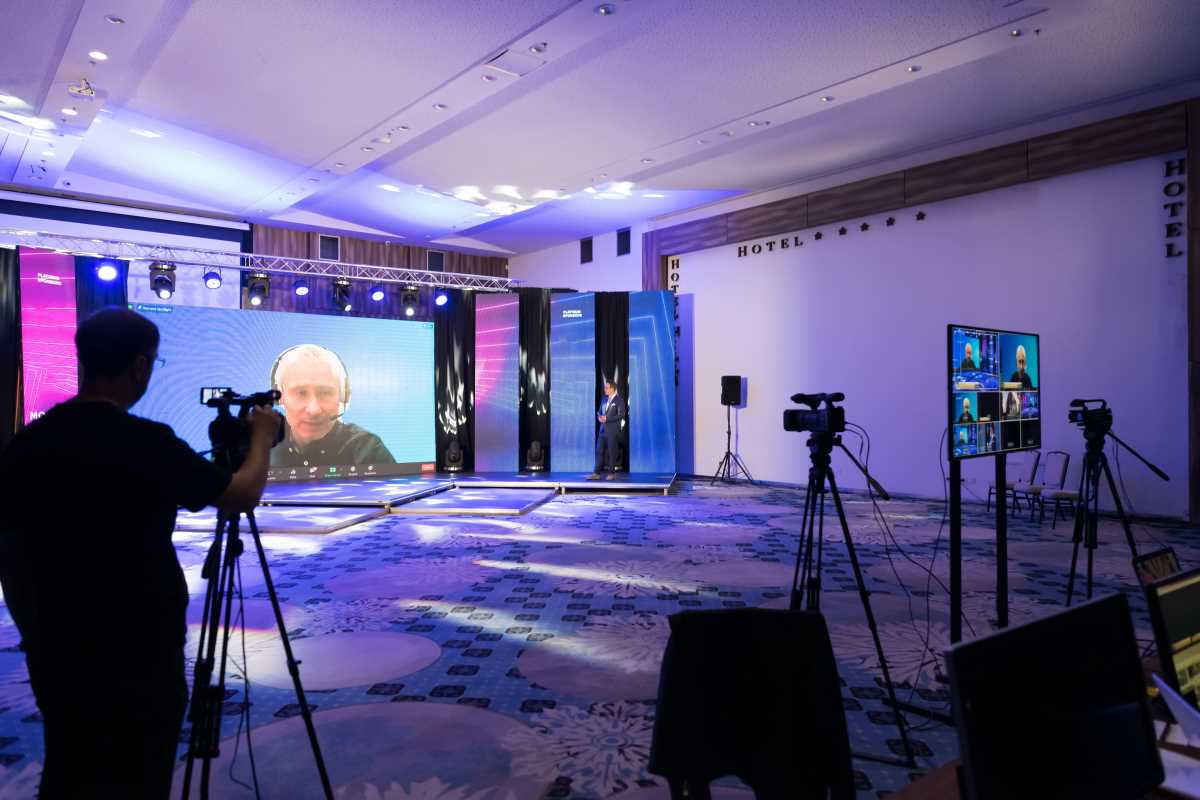Hybrid events have drastically transformed since their rise during the pandemic, bridging the gap between in-person and virtual audiences. Organizers now see hybrid formats not just as a pandemic workaround but as a powerful strategy for broader reach and engagement. The post-pandemic era has seen rapid improvements in technology, inclusivity, and interactivity, making hybrid events more effective than ever before. Let's talk about how hybrid events are evolving, the innovative changes shaping the industry, and what you can expect when planning or attending one today.
A Shift in Purpose and Planning
Hybrid events were once primarily about maintaining business continuity during social distancing measures. Today, they’ve become collaborative hubs, blending physical interactions with virtual convenience. Organizers now focus on creating parity, making sure both in-person and online participants have an equal experience.
A corporate conference might live-stream its keynote sessions while offering breakout rooms for remote participants. Audience polls, Q&A sessions, and live chat features are seamlessly integrated into sessions to create cohesion. Emerging tools make it easier than ever to plan hybrid events that cater to diverse audiences.
Enhanced Technologies Driving Hybrid Events
Technology fuels the evolution of hybrid events, with new platforms and tools making them more engaging and accessible.
Immersive Virtual Platforms
Platforms like Hopin and EventMobi provide dynamic virtual environments capable of mimicking real-world conference venues. Using 3D technology, virtual attendees can explore interactive booths, network in lounges, and watch presentations as if they were physically present.
Real-Time Data Tracking
Event analytics have become a game-changer. Organizers use real-time data to monitor attendance, measure engagement, and adjust programming on the fly. Features like heat maps track which parts of an event receive the most attention, helping organizers refine future events.
Improved Streaming Solutions
Video quality is no longer an afterthought. Platforms now support ultra-high-definition streaming with low latency, making sure virtual attendees feel as immersed as those on-site. AI-driven captions and translations further enhance accessibility, breaking down language barriers for international participants.
Example in Action
Consider a music festival offering live streams for remote fans. Attendees at home can toggle between different concert stages or even access exclusive backstage interviews that aren’t available to the live crowd. This parallel content deepens audience satisfaction.
Greater Focus on Accessibility
Accessibility is becoming a core consideration in hybrid event planning. Organizers are prioritizing features that make events inclusive for all participants, regardless of their location or abilities.
Captioning and Subtitles
AI-powered tools like Otter.ai now generate automatic transcriptions, enabling attendees with hearing impairments to follow along.
On-Demand Content
Many hybrid events now offer on-demand replays, allowing busy participants to catch up at their convenience. This accessibility encourages higher participation rates and minimizes time-zone challenges.
Flexible Ticketing
Organizers provide flexible ticketing options that align with hybrid formats. Participants can choose fully remote passes, single-day tickets, or VIP packages that include both physical and virtual perks. Accessibility isn’t just about removing barriers; it’s about empowering attendees to participate in ways that suit their needs.
Trends Redefining Hybrid Events
Several trends are reshaping what hybrid events look like today. They reflect both audience preferences and the growing capabilities of technology.
Hyper-Personalization
Audiences want personalized experiences that cater to their interests. Event platforms use attendee data to recommend sessions, networking opportunities, or workshops tailored to individual preferences. An art fair might use algorithms to suggest booths based on your favorite mediums or styles.
Gamification
Games and challenges are being incorporated into hybrid formats to boost engagement. Virtual scavenger hunts or point-based systems tied to networking encourage participation. Attendees might earn rewards for asking questions during sessions or engaging with sponsor content.
Sustainability Practices
The hybrid format naturally reduces the carbon footprint of an event, as fewer attendees travel. Planners are doubling down by incorporating green venues, digital materials, and virtual swag bags, creating eco-conscious events across formats.
Hybrid Networking Solutions
Innovative networking tools allow participants to connect seamlessly, whether in-person or virtual. Features like AI matchmaking introduce attendees with shared interests. A job fair app might connect recruiters and virtual job seekers through automated recommendations.
Practical Strategies for Future Hybrid Events
Planning a hybrid event requires balancing the needs of both audiences. Simple strategies can provide a seamless experience for everyone involved.
Invest in Quality Equipment
Sound, lighting, and visuals should meet the highest standard so remote attendees feel included. A high-quality microphone or multiple camera angles can elevate the virtual experience.
Train Your Team
Staff members should be trained to manage both physical and virtual event components. Live-stream moderators can handle online engagement while on-site staff assist attendees face-to-face.
Test Technology in Advance
A full technology dry run guarantees there won’t be surprises on the big day. Test streaming connections, platform integrations, and interactive features to troubleshoot potential issues early.
Balance Content for Both Audiences
Content should be designed to engage physical attendees without alienating the virtual audience. Shared experiences like live polls and synchronized Q&A sessions build unity across formats.
Keep Engagement Top of Mind
Interaction drives attendee satisfaction. Start sessions with icebreakers that encourage online and offline participation. Use features like live feedback forms to keep participants engaged in real time.
 (Image via
(Image via





